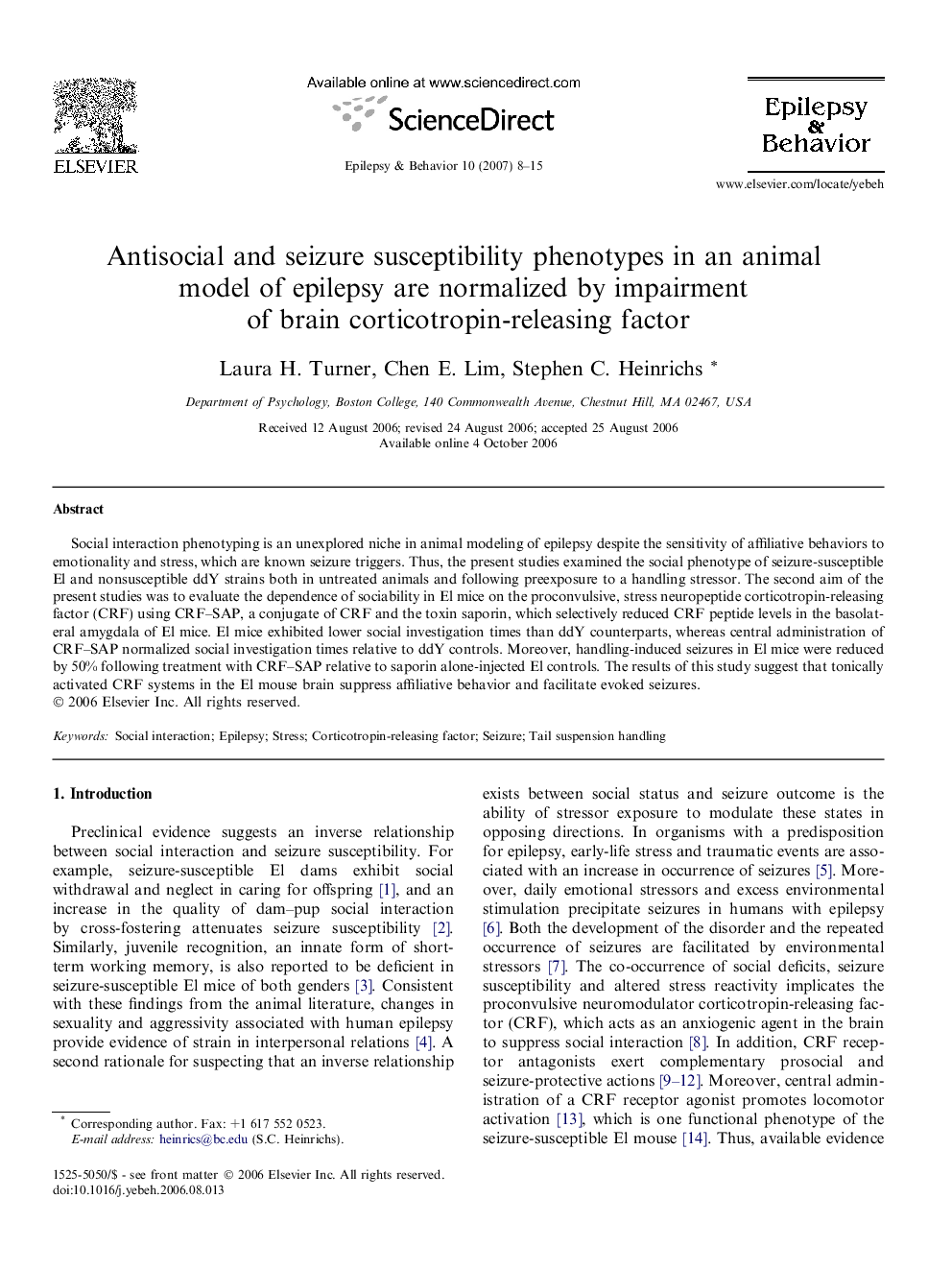| Article ID | Journal | Published Year | Pages | File Type |
|---|---|---|---|---|
| 3051393 | Epilepsy & Behavior | 2007 | 8 Pages |
Social interaction phenotyping is an unexplored niche in animal modeling of epilepsy despite the sensitivity of affiliative behaviors to emotionality and stress, which are known seizure triggers. Thus, the present studies examined the social phenotype of seizure-susceptible El and nonsusceptible ddY strains both in untreated animals and following preexposure to a handling stressor. The second aim of the present studies was to evaluate the dependence of sociability in El mice on the proconvulsive, stress neuropeptide corticotropin-releasing factor (CRF) using CRF–SAP, a conjugate of CRF and the toxin saporin, which selectively reduced CRF peptide levels in the basolateral amygdala of El mice. El mice exhibited lower social investigation times than ddY counterparts, whereas central administration of CRF–SAP normalized social investigation times relative to ddY controls. Moreover, handling-induced seizures in El mice were reduced by 50% following treatment with CRF–SAP relative to saporin alone-injected El controls. The results of this study suggest that tonically activated CRF systems in the El mouse brain suppress affiliative behavior and facilitate evoked seizures.
